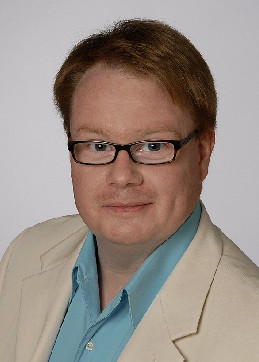


At present there is a significant interest to model and understand dynamic quantum transport in realistic nanoscale devices to ultimately guide the development of novel quantum devices, operating particularly in the terahertz (THz) frequency regime for sensing and emission of THz radiation. While the formal machinery to describe quantum dynamics in general does exists for many decades already, it's implementation still remains a challenging task as it requires to simultaneously account for the non-equilibrium nature of transport of open systems, the complex inhomogeneous environment typical for realistic devices, and most importantly the dynamic feedback between the space-dependent AC charge and potential induced by external time-dependent fields applied at the terminals.
In the first part of my talk, I will focus on the technical details of the basic steps required to develop a fully self-consistent, AC quantum transport theory employing Non-Equilibrium Green Functions (NEGF) that fulfills all theses above needs. A brief outline will be given how to calculate the frequency-dependent charge by means of contour-integration in an efficient manner.
In the second half, I will then show how the developed AC quantum approach can be exploited to gain suitable information about the high-frequency behavior of nanoscale devices by example of a carbon nanotube (CN) field-effect transistor (FET) at varying gate lengths. It is shown that the high-frequency behavior of the CNFET, as characterized through its dynamic conductance g(ω), is sensitive to the state at which the device is operated as controlled by the gate terminal. In the ON-state, g(ω) exhibits divergent peaks at THz-frequencies, which are attributed to plasmon excitations. Operating the CNFET in the OFF-state, these distinct features vanish entirely and g(ω) shows a smooth oscillatory behavior - a signature of single-particle excitations. Importantly, the plasmonic excitations exist only if the self-consistent charge-potential feedback is an integral part of the AC theory - a non self-consistent AC theory misses this important physics of collective excitations and thus does not capture the plasmonic properties of nanoscale materials in general.
Finally, it is shown that the plasmonic spectrum can be tuned and higher-order plasmon modes be excited by increasing the channel length of the CNFET. The presented approach is quite general and can be applied to study the high-frequency material properties of many other materials such as nanowires, graphene or molecules etc. along with their plasmonic behavior under non-equilibrium conditions.
[1] Diego Kienle and François Léonard, Phys. Rev. Lett. 103, 026601 (2009).
[2] Diego Kienle, Mani Vaidyanathan, and François Léonard, Phys. Rev. B 81, 115455 (2010).



At present there is a significant interest to model and understand dynamic quantum transport in realistic nanoscale devices to ultimately guide the development of novel quantum devices, operating particularly in the terahertz (THz) frequency regime for sensing and emission of THz radiation. While the formal machinery to describe quantum dynamics in general does exists for many decades already, it's implementation still remains a challenging task as it requires to simultaneously account for the non-equilibrium nature of transport of open systems, the complex inhomogeneous environment typical for realistic devices, and most importantly the dynamic feedback between the space-dependent AC charge and potential induced by external time-dependent fields applied at the terminals.
In the first part of my talk, I will focus on the technical details of the basic steps required to develop a fully self-consistent, AC quantum transport theory employing Non-Equilibrium Green Functions (NEGF) that fulfills all theses above needs. A brief outline will be given how to calculate the frequency-dependent charge by means of contour-integration in an efficient manner.
In the second half, I will then show how the developed AC quantum approach can be exploited to gain suitable information about the high-frequency behavior of nanoscale devices by example of a carbon nanotube (CN) field-effect transistor (FET) at varying gate lengths. It is shown that the high-frequency behavior of the CNFET, as characterized through its dynamic conductance g(ω), is sensitive to the state at which the device is operated as controlled by the gate terminal. In the ON-state, g(ω) exhibits divergent peaks at THz-frequencies, which are attributed to plasmon excitations. Operating the CNFET in the OFF-state, these distinct features vanish entirely and g(ω) shows a smooth oscillatory behavior - a signature of single-particle excitations. Importantly, the plasmonic excitations exist only if the self-consistent charge-potential feedback is an integral part of the AC theory - a non self-consistent AC theory misses this important physics of collective excitations and thus does not capture the plasmonic properties of nanoscale materials in general.
Finally, it is shown that the plasmonic spectrum can be tuned and higher-order plasmon modes be excited by increasing the channel length of the CNFET. The presented approach is quite general and can be applied to study the high-frequency material properties of many other materials such as nanowires, graphene or molecules etc. along with their plasmonic behavior under non-equilibrium conditions.
[1] Diego Kienle and François Léonard, Phys. Rev. Lett. 103, 026601 (2009).
[2] Diego Kienle, Mani Vaidyanathan, and François Léonard, Phys. Rev. B 81, 115455 (2010).